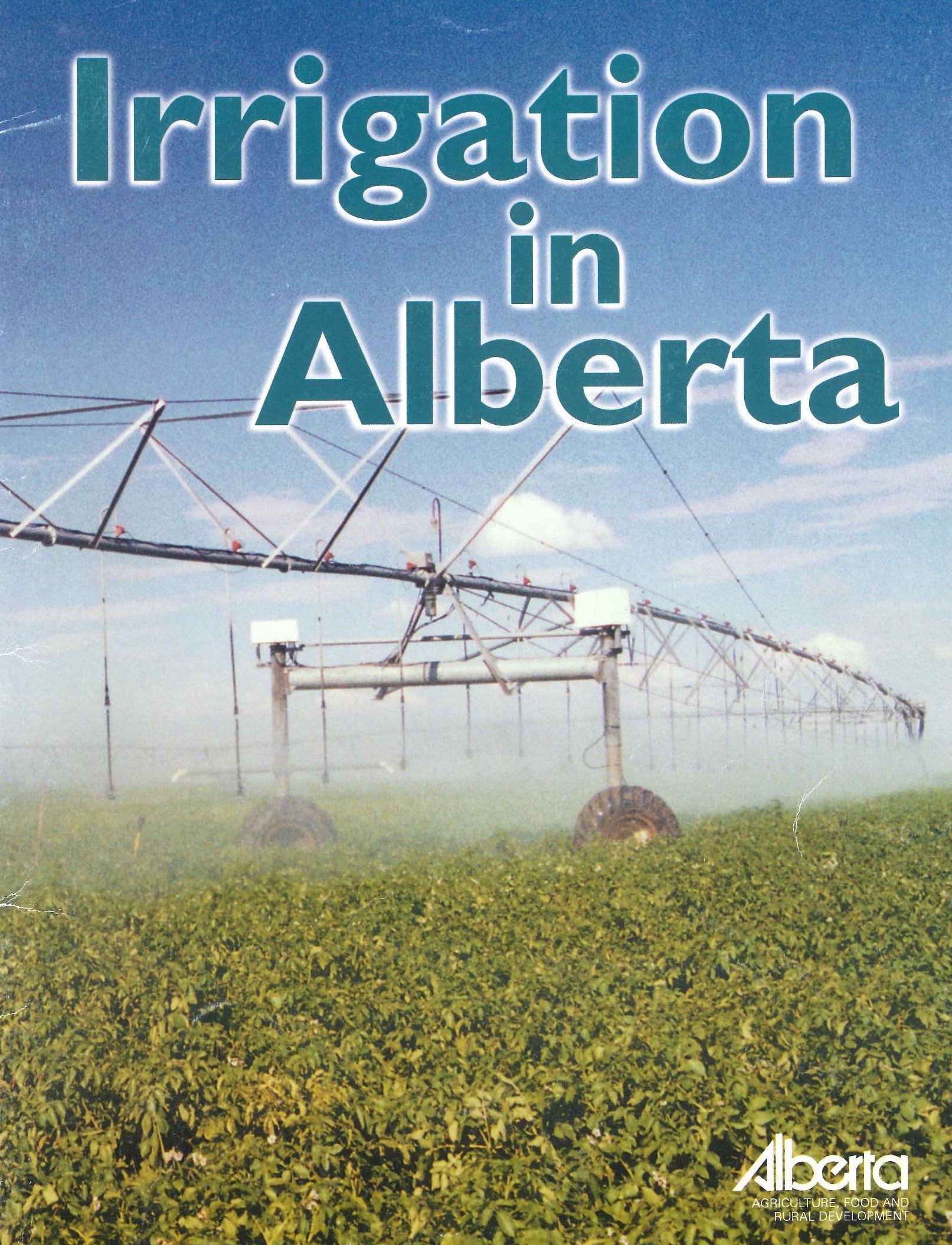| |  Although agricultural production under intensive irrigation is not unique to Alberta, the irrigated area within the province represents 65% of all of the total irrigation area across Canada. With more than 8,000 kilometres of conveyance works and more than 50 water storage reservoirs devoted to managing a finite water resource, based around irrigated agriculture, Alberta is the capital of irrigation in Canada. Although agricultural production under intensive irrigation is not unique to Alberta, the irrigated area within the province represents 65% of all of the total irrigation area across Canada. With more than 8,000 kilometres of conveyance works and more than 50 water storage reservoirs devoted to managing a finite water resource, based around irrigated agriculture, Alberta is the capital of irrigation in Canada.
Across the more than 625,000 hectares of irrigated land in the province, irrigation producers are able to grow a great diversity of crops, many of which can only be successfully produced under the longer and warmer growing season of the irrigated area, but a region where naturally-available moisture for crop growth is generally less than half that required and very erratic in its distribution. Irrigation offsets this disparity and increases the surety of producing a quality and high yielding crop. The crop diversity supports ever-growing value-added processing as well as an expanding intensive livestock industry in the province. With more than 40 different types of crops being grown, irrigation water users can have the flexibility needed to sustain viable farm enterprises, even during times with market swings in commodity prices. However, having that market flexibility does not come to the producer without a significant investment in irrigation equipment and other agricultural production systems.
The publication"Irrigation in Alberta"provides an overview of irrigation development in the province, from the late 1800s through to its emergence into the 21st century. The distribution of the irrigation area primarily involves the 13 irrigation districts in southern Alberta (approximately 525,000 hectares), but also includes the "private irrigation" of more than 100,000 hectares of irrigated land as far north as the Peace River country. "Irrigation in Alberta" not only reviews the history and current operation of irrigation in the province but also examines the many spin-off benefits that arise due to the controlled availability of water and its prudent management. As can be seen in the overview, benefits not only accrue to irrigation water users, but also are available to other sectors of the public through increased economic and rural development, increased opportunity for recreational activities as well as through a commitment to wildlife habitat enhancement.
Irrigation in Alberta is unquestionably a significant part of the agricultural landscape, occurring on less than 6% of the cultivated land base in the province, but contributing more than 19% of the gross primary agricultural production.
"Irrigation in Alberta" is published by the Technology & Innovation Branch of Alberta Agriculture and Food (AF). Lethbridge, Alberta. Copyright 2000. All rights reserved by Her Majesty the Queen in Right of Alberta.
Copies of this booklet are available as either a downloadable .PDF file from this website or are available in printed hard-copy form from the Publications Office of AF, located at 7000 - 113th Street, Edmonton, Alberta Canada T6H 5T6.
PDF File Downloads :
Irrigation in Alberta Part 1 (1016 KB)
Irrigation in Alberta Part 2 (980 KB)
Irrigation in Alberta Part 3 (371 KB)
Irrigation in Alberta Part 4 (469 KB)
Reproduction of this booklet up to 100 units or photocopying of individual copies by non-profit organizations is permitted. Regardless of use, all multiple reproduction from either hard-copy or electronic digital form, beyond individual personal use, requires written permission from the Technology & Innovation Branch of AF.
Credits:
Text: Barbara Grinder, Viewpoint Communications
Graphics: Bonnie Hofer, Technology & Innovation Branch
Photo - Page 8 - Kirt Woolf, United Irrigation District (UID)
All other photos - AF - Technology & Innovation Branch
Metric Conversions:
1 kilometre (km) = 0.62 miles
1 metre (m) = 3.28 feet
1 centimetre (cm) = 0.39 inches
1 millimetre (mm) = 0.039 inches
1 hectare (ha) = 2.471 acres
1 cubic decametre (dam3) = 0.81 acre-feet |
|